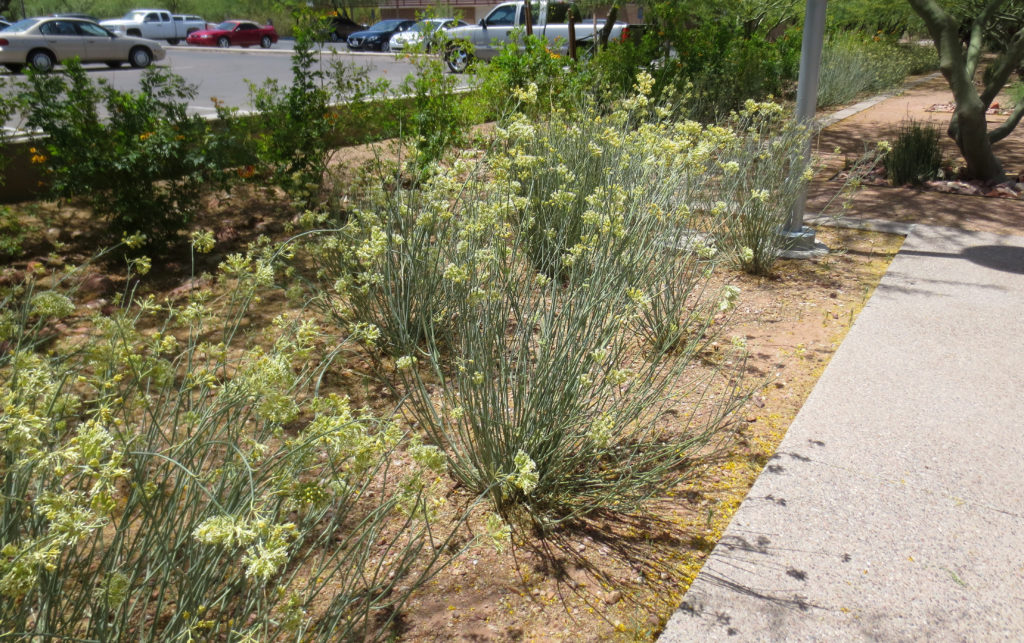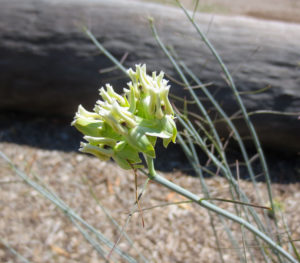
Botanical Name
Asclepias subulata
Common Names
Desert Milkweed, Jumete, Rush Milkweed, Reed-stem Milkweed
Habitat / Range
Desert milkweed is often found along desert washes and sandy flats, and sometimes on rocky hillsides in lowlands up to 2,500 feet. It will settle into disturbed soils, so can be found along roadsides as well.
The range of desert milkweed extends from western Arizona and southern Nevada, into southeastern California and Baja California, Sonora, and Sinaloa, Mexico.
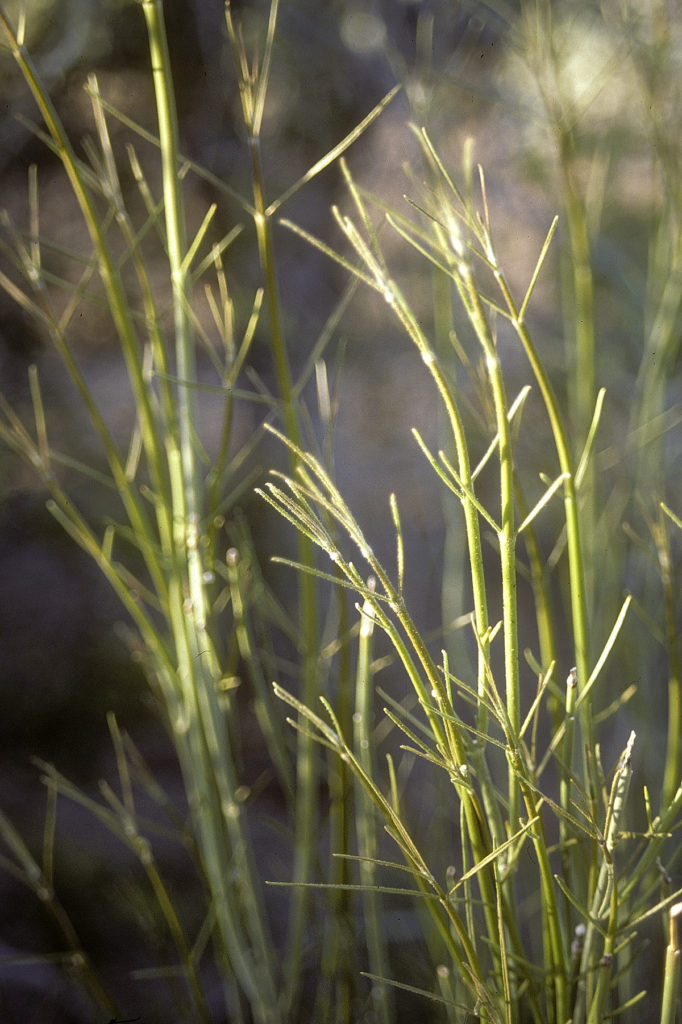
History / Folklore
Historically, various Native Americans through its range have used desert milkweed as a medicinal plant, and others have considered it purely toxic. The Seris used the roots for headaches, toothaches, and heart problems. More locally, Pimas used it as a purgative, an emetic, for sore eyes, and for stomach disorders.
Evidently the U. S. Department of Agriculture studied the desert milkweed as a potential rubber plant. No commercial use of the rubber was made, however.
Description
Desert milkweed forms a clump of numerous slender, erect, gray-green stems that arise from a woody base. The perennial can reach a height of 3 to 5 feet with a similar spread. Sparse linear leaves, 1 to 2 inches long and 1/16 to 1/8 wide develop on new growth but drop fairly quickly. Broken stems and leaves exude a milky latex containing rubber. Umbels of waxy pale yellow or cream flowers bloom on stem tips any time from spring through fall. Typical milkweed seed pods develop to approximately 3 inches long, releasing the tufted seeds when ripe.
Pineleaf milkweed (Asclepias linaria) is much leafier and typically smaller than desert milkweed. Asclepias albicans is a bit stouter, with thicker, taller stems.
Uses
Desert milkweed can be used as an upright sculptural accent in the landscape. Softer foliaged perennials and annual wildflowers compliment milkweed’s form. Producing practically no debris, desert milkweed is perfect for poolscapes. It is tough enough to thrive in dry, hot, sunny locations, so use it in those difficult spots of full sun and reflected sun and heat. Preferring well draining soil, it is quick to establish and very drought tolerant. For a natural look, use desert milkweed when planting wash areas.
And yes, desert milkweed is fit for queens – queen butterflies, and other royals – the monarchs. Typical of milkweeds, this species serves as a nectar source for the adults, as well as a food source for their caterpillars. The developing larvae will munch on any foliage as well as buds and flowers. Don’t worry – more will develop later! This milkweed also attracts the colorful tarantula hawk wasp.

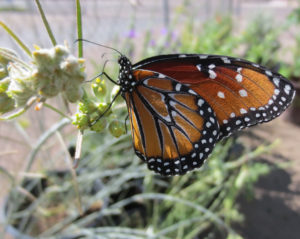
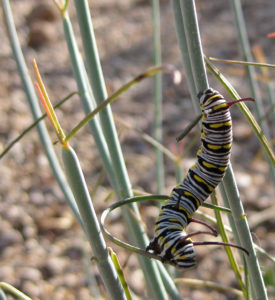
Other wildlife that may not be so welcomed are the milkweed bugs and aphids. I’ve never noticed the bugs doing much harm, and aphid outbreaks aren’t usually detrimental. Aphid populations can be reduced with a strong jet of water or a soapy water spray. Less frequent irrigation can also make the plants less enticing to aphids.
If you are interested in propagating your own plants, milkweed germinates easily from seed planted in warm conditions.
Health Concerns/Cautionary Note
The milky sap of desert milkweed can be a skin irritant.
All photos: Kirti Mathura
Did you know that up to 70 percent of water use is outdoors?
That’s why we love desert plants and feature them each month. You can learn more about Desert Milkweed and other plants on our Arizona Low-Water-Use Plants page. Visit our page on Choosing and Planting Low Water-Use Plants for tips on plant selection and how to plant properly. Also, be sure to read through all of our featured Plant of the Month blogs! Check out this additional blog about Desert Milkweed!
____________________________
This article is being reprinted with permission. You can read the original article in the Maricopa County Cooperative Extension Master Gardener Journal. From time to time, Water – Use It Wisely features guest bloggers who write about topics related to water and water conservation. The author of this blog post, Kirti Mathura, is a Master Gardener and the Program Coordinator for the Smartscape Training Program for Landscape Professionals.


